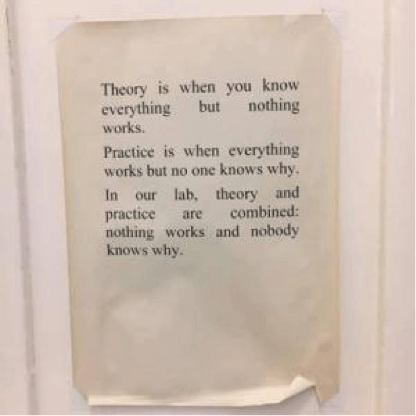
Luckily, our labs weren’t as bad as the picture suggests. However, BME 620 labs were still challenging because they were open-ended and bounded at the same time. We only had 3 hours to run the lab and write the report, and we had to choose what question we wanted to ask that day and how much data to collect. The labs were done in groups of 2 or 3 so that helped generate ideas.
It wasn’t completely random – each lab had a topic related to lecture earlier that day. The lab coordinator for that week, a fellow student from class, would come prepared with some experiment ideas and provide us background and methods to do the lab successfully. They basically ran the lab with the TA’s help. Honestly, being lab coordinator was harder than doing the lab itself.
I really liked these labs because it wasn’t a boring textbook experiment to run. Instead, we chose what questions we were interested in, collected data from different devices, and analyzed it – similar to what you would actually do in industry. And that was the point – having a set of instructions isn’t good preparation for the real-world where the question might be known but the experiment is often something we have to design.
Two labs I enjoyed were the acoustic signals and nerve conduction. In the first one, we used a cochlear implant simulator software to mimic what a deaf person would hear with a cochlear implant and tested how many electrode channels were required before the audio became intelligible for the user. It demonstrated that so much of what we hear is also based on what we see – without any visual cues or context about the audio sound, I (as the test subject) found it really difficult to determine what was being said and it required 25 channels at a minimum.
In the second one, we gave ourselves a slight shock near the bicep muscle to stimulate the median motor nerve there and in the wrist to stimulate the same nerve, and recorded the EMG signal in the thumb and forefinger for both stimulations. by calculating the latency (delay) between the two recordings, we determined the nerve conduction velocity. The nerve controls those muscles and we could see a visible twitch after the stimulation was applied. Signal processing with MATLAB was needed to filter out noise and find EMG peaks. Nerve conduction speeds are known in normal nerves and are a good tool to diagnose neuropathies because a slower than average velocity would imply nerve damage of some sort.
Published on December 14th, 2016Last updated on August 29th, 2017
